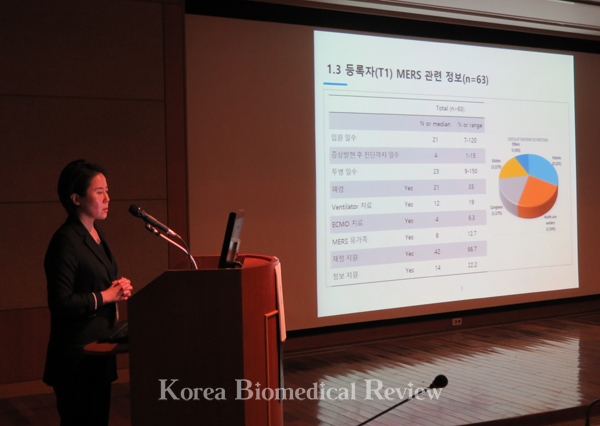Most of the Korean patients infected with the Middle East Respiratory Syndrome (MERS) in 2015 have not fully recovered from physical or psychological traumas, a recent cohort study showed. At the time, the nationwide outbreak had 186 people infected and claimed 38 lives.
The Korean Academy of Medical Sciences unveiled the cohort study on MERS patients at the Seoul National University Cancer Hospital on Thursday.
The two-year observation study from November 2015 to October 2017 checked lung functions and mental health of 72 MERS patients out of the 148 survivors. Five hospitals participated in the study -- the National Medical Center, Seoul National University Hospital, Seoul Medical Center, Dankook University Hospital and Chungnam National University Hospital.

The study showed that MERS patients saw their walking ability improved, but their lung functions worsened.
“Those who had severer pneumonia showed poorer lung functions in one year since the outbreak. After two years, their lung functions slightly worsened,” said Shin Hyoung-shik, head of the NMC’s infectious disease research center, presenting a clinical assessment of the study. “Their walking ability for six minutes was a bit weaker than ordinary people in one year since the outbreak but went back to the normal level in two years.”
Shin noted that 53 percent of MERS patients’ lungs showed fibrosis in computerized tomography (CT) scans on the chest, which was the most common symptom among the MERS patients. However, such problem almost disappeared after two years.
“With magnetic resonance imaging (MRI) scans on their brains, we could also learn that white matter abnormalities were most commonly observed, with 33 percent of the patients showing such problem. In the positron emission tomography-computed tomography (PET-CT), inflammatory lesions in the lung were the most common, with 40 percent of them showing such issues,” he said.
About 54 percent of the MERS patients suffered from depression or chronic fatigue syndrome. Post-traumatic stress disorder (PTSD) appeared as the most frequently reported problem with 27 percent of them having it, followed by depression and sleep disorder with 15 percent, respectively.
Another 5.8 percent said they had an anxiety disorder. Nearly 2 percent of the patients were those with a high risk of attempting suicide. More than one third, or 36.5 percent, suffered from chronic fatigue syndrome.
The MERS victims who suffered from such physical and psychological disorders saw their symptoms abate during the first year of observation. However, their inclination to attempt suicide or excessive alcohol intake did not show any improvement.
Lee So-hee, head of the Psychiatry Department of the NMC, who presented the assessment result of mental health of the MERS patients, said the MERS survivors are still suffering from the trauma, although two years have passed since the outbreak.
“We need to continuously observe the survivors’ mental health and support treatments for those in the high-risk group,” she said. “In case of an outbreak of a new epidemic, the authorities should guide mental health for the general public, the self-quarantined, physicians, and the infected patients. They should also provide mental health consultation service.”

